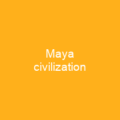Maya Stelae: The Silent Guardians of Ancient History
Imagine a world where towering stone monuments stand as silent witnesses to the rise and fall of empires, their surfaces carved with stories of kings and conquests. These are the Maya stelae, monumental works that have captivated historians and archaeologists for centuries.
Origins and Purpose
Maya stelae are more than just monuments; they are the stone banners of a bygone era. They began appearing around 400 BC, marking the beginning of the Classic Period in Maya civilization. These towering structures were not just erected to glorify kings but also served as a means to record significant events and maintain divine kingship. The stelae embodied the period they represented, containing ritual significance that was central to Maya kingship ideology.
Stelae and Altars: A Sacred Duo
The production of stelae was often accompanied by circular altars, which may have symbolized a cut tree trunk. These altars were used for human sacrifice or as thrones during ceremonial events. The combination of stelae and altars created a sacred space that was integral to the religious practices of the Maya people.
Stelae as Embodiments of Power
Each stela was more than just a piece of stone; it was an embodiment of the power and authority of its subject. Royal stelae were considered ‘owned’ by the depicted individuals, serving to perpetuate their legacy into eternity. The act of wrapping or binding a sacred object held significant meaning in Mesoamerican culture, further emphasizing the spiritual importance of these monuments.
Artistry and Craftsmanship
The creation of stelae was a meticulous process that required skilled artisans. These artists used stone chisels and wooden mallets to shape the stones, often working with hammerstones made from flint and basalt for shaping softer rocks. The materials varied, but limestone was commonly used, while other types were preferred in the Southern Maya area.
Painted Splendor
Originally, most stelae were brightly painted in various colors using mineral and organic pigments. This vibrant coloration added to their grandeur and helped convey the stories they told through hieroglyphic script and imagery. The use of paint was a testament to the artistic sophistication of Maya civilization.
The Spread of Stela Production
The tradition of raising stelae originated with the Olmecs in Mesoamerica, spreading to other sites along the Pacific Coast and southwards. Early Maya rulers began erecting stelae around 400 BC, celebrating their achievements and validating their right to rule. These early stelae depicted rulers as warriors or wearing masks and headdresses of Maya deities.
Stelae in the Classic Period
The standard form of the Maya stela featuring art, calendrical dates, and hieroglyphic text began to be erected in the Maya lowlands after 250 AD. The introduction of non-Maya imagery from Teotihuacan was seen at Tikal and other cities but later abandoned by Siyaj Chan Kʼawiil II, who reintroduced Pacific Coast and highland imagery.
Decline and Transformation
The decline in stelae production during the Late Preclassic period (100–300 AD) was linked to the intrusion of peoples from the western highlands and the eruption of Ilopango Volcano. In the Early Classic period, cities like Tikal developed new forms of public imagery combining elements of Preclassic and Pacific Coast traditions.
Stelae in the Late and Terminal Classic
In the Late Classic, Maya kings began marking kʼatun cycles with new stelae. At Copán, kings Chan Imix Kʼawiil and Uaxaclajuun Ubʼaah Kʼawiil developed a new high-relief style of stelae. Quiriguá defeated its overlord Copán in 738 and erected massive red sandstone stelae with highly complex hieroglyphic text.
Postclassic Period
In the Terminal Classic, the decline in stelae erection was linked to the decline of divine kingship. Kings were no longer depicted as the sole rulers but shared stelae with subordinate lords. This reflected a decentralization of power and the weakening of the king’s rule.
Modern Threats
Today, Maya stelae face threats from plundering for sale on the international art market. Looting has been linked to economic and political instability, and collectors have had pieces stolen based on information found in archaeological books and catalogues. The preservation of these ancient monuments is crucial for understanding the rich history of the Maya civilization.
Maya stelae stand as silent sentinels, guarding the secrets of a lost world. Their stories are waiting to be deciphered, their messages still echoing through time. As we continue to study and protect them, we uncover not just artifacts but a profound connection to our shared human history.
You want to know more about Maya stelae?
This page is based on the article Maya stelae published in Wikipedia (retrieved on November 28, 2024) and was automatically summarized using artificial intelligence.








